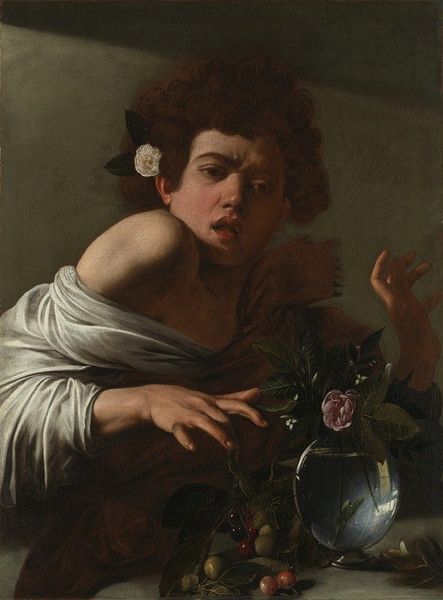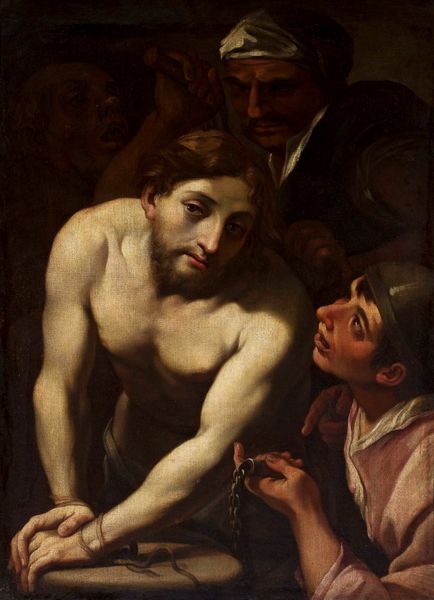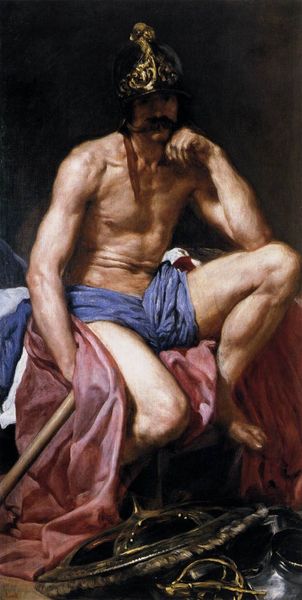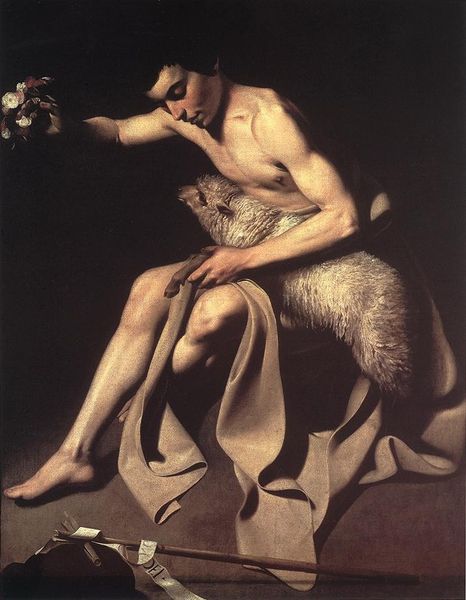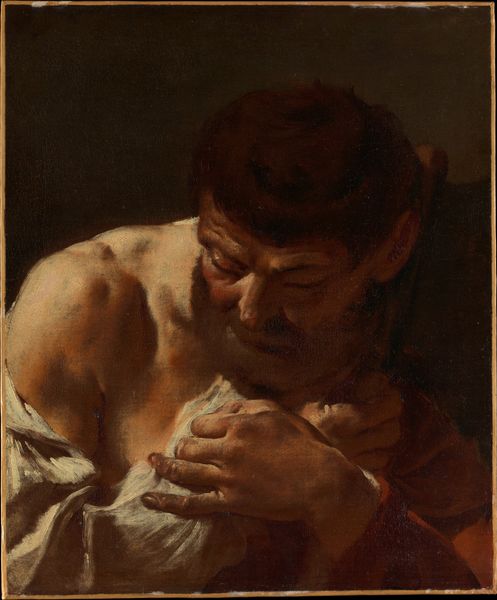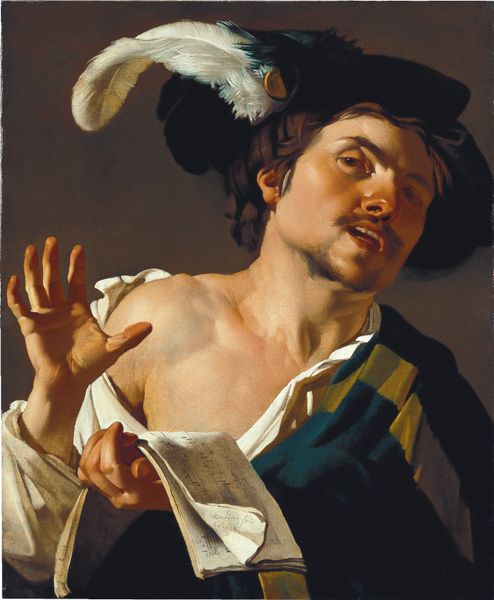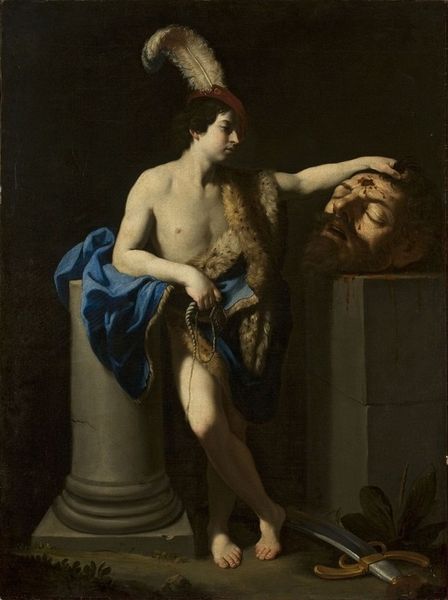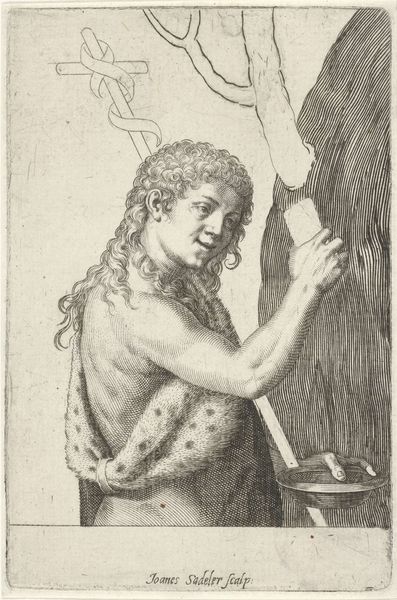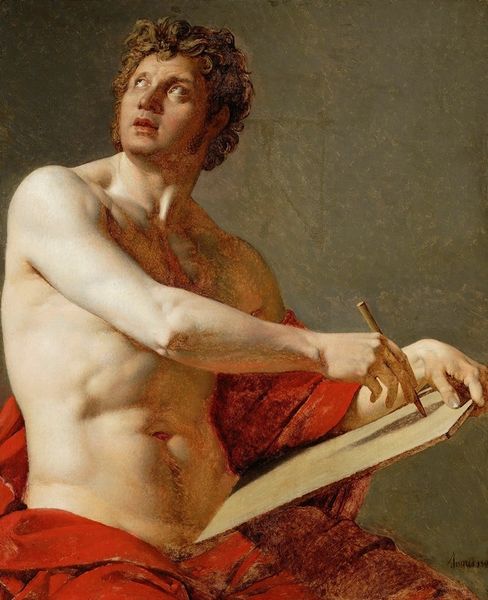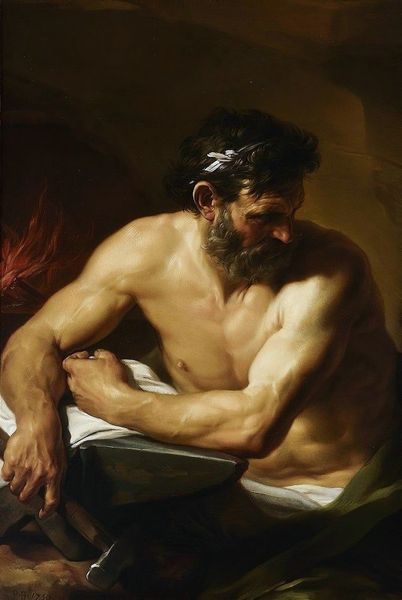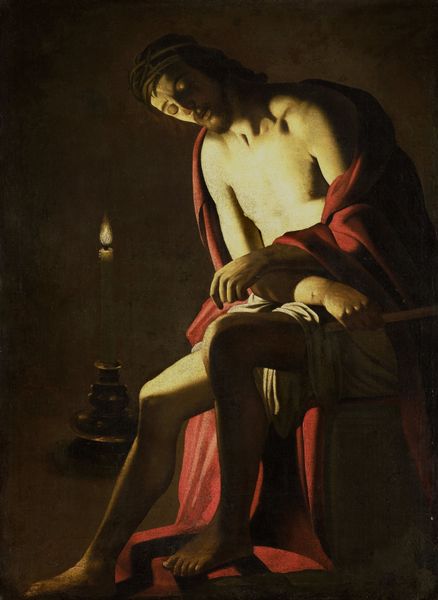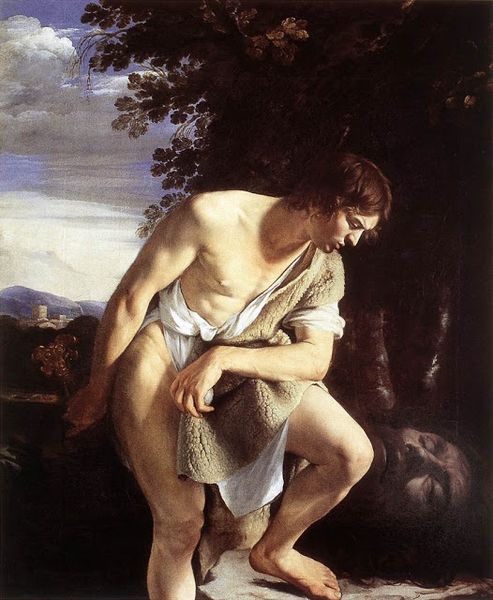
painting, oil-paint
#
portrait
#
narrative-art
#
baroque
#
portrait
#
painting
#
oil-paint
#
mythology
Copyright: Public Domain: Artvee
Editor: This is Caravaggio's "Young Sick Bacchus" from around 1593, oil on canvas. I'm struck by the figure's almost unsettling expression – it's a far cry from the idealized depictions of Bacchus I'm used to. What do you see in this piece from a formalist perspective? Curator: I am immediately drawn to the stark contrast of light and shadow, the *chiaroscuro* so characteristic of Caravaggio. Note how this sharp contrast models the figure’s musculature, lending it a palpable sense of volume, while simultaneously flattening the background into an abstract void. Editor: Yes, it definitely emphasizes the physical form. Does the coloring also play a role? Curator: Absolutely. Observe the muted, almost sickly tones of the flesh. The pallor, coupled with the ripened, almost decaying fruit, creates a deliberate tension. Consider also how the draped fabric, rendered in cool whites and purples, serves as a contrasting plane against the warm flesh tones, further heightening the emotional tenor. Editor: That interplay of color and form creates a certain… unease. What is your assessment of this effect? Curator: The effectiveness arises precisely from these formal tensions. The contrasting colours work to both showcase the illusion of realism while, paradoxically, emphasising the artificial construction of the image through manipulation of form and tone. The result invites us to interrogate not only the representation of sickness, but the very act of representation itself. Editor: I hadn’t thought about it in terms of the “act of representation”. Thanks for opening up that point, which is useful. Curator: My pleasure. It is by analysing such internal structural dynamics that the artwork reveals its own operational logic, freed from external historical constraint.
Comments
No comments
Be the first to comment and join the conversation on the ultimate creative platform.
